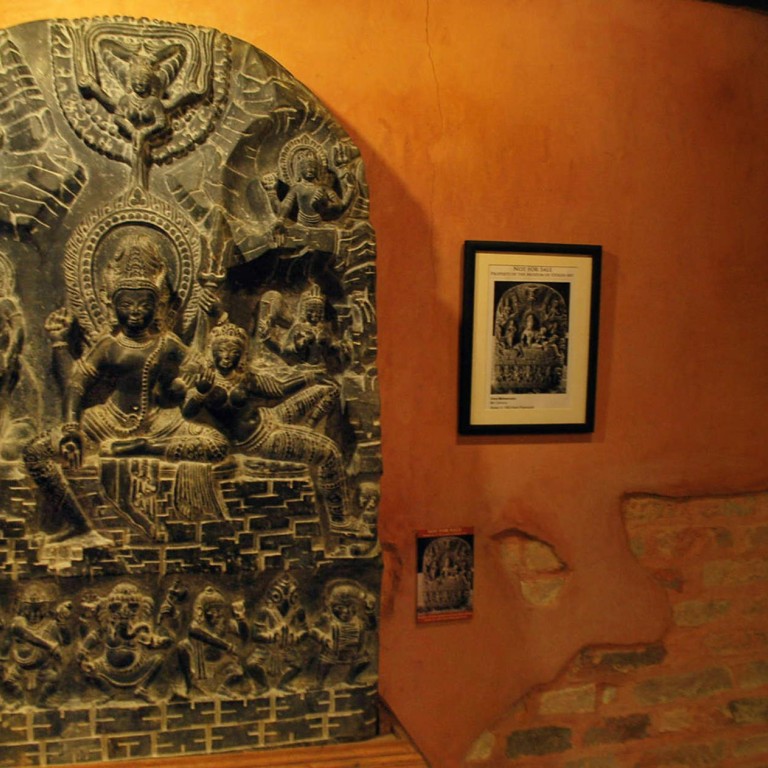
Nepali museum to honour stolen art of nation
Artist aims to return smuggled sculptures home in the form of replicas of gods and goddesses in order to make people aware of what was lost
In past decades, Nepal has suffered the loss of hundreds of its gods and goddesses.

Rabindra Puri's Museum of Stolen Art, planned to open in 2015, will house replicas of 50 centuries-old stone sculptures that were smuggled out of Nepal to become prized additions to private collections and museums.
"I want to make people aware and make them realise what they've lost," says 43-year-old Puri, an artist and architect devoted to Nepal's ancient art and architecture. "It will showcase the significance and value of Nepal's glorious artwork that no longer is in the country."
Puri's workspace in the city of Bhaktapur in the Kathmandu Valley looks messy. But beneath the dusty stone slabs are emerging modern-day masterpieces.
Fourteen artists - nine Nepalis and five Indians - are working on the sculptures; 12 of the 20 completed statues are already on public display at the Heritage Gallery, in Bhaktapur. They will eventually become a part of the Museum of Stolen Art when it opens in Panauti, a medieval town 35 kilometres southeast of Kathmandu.
I want to make people aware and make them realise what they've lost. It will showcase the significance and value of Nepal's glorious artwork that no longer is in the country
"This is one of the oldest statues that we have replicated," Puri said pointing to the statue of a woman worshipping with her palms clasped. The original was stolen in 1985.
Of the most prominent statues in the Heritage Gallery is a copy of the stolen in 1983 from the Pashupatinath area. The grand image of the god Shiva and his wife Uma, seated and surrounded by other members of their family, is a magnum opus of Nepal's most glorious creative era.
It is the elaborate artwork, coupled with the history associated with the sculptures, that makes the Hindu and Buddhist objects so precious, Puri said.
After Nepal opened its doors to the outside world in the early 1950s, "Kathmandu was like an open museum", wrote the late art historian Lain Singh Bangdel, in his book, . According to Nepal's Department of Archaeology, Kathmandu Valley is still home to more than 10,000 sculptures that are revered by locals.
"It's the Westerners' hunger for Nepali art and the Nepali smugglers' hunger for money that fuelled the illegal trade," Puri said. In the 1970s and 1980s, an epidemic of theft and smuggling stripped temples and monasteries of their idols.
Bangdel's book, along with Jurgen Schick's , helped highlight the problem and resulted in some stolen sculptures returning to Nepal in the 1990s, said Rohit Ranjitkar of the Kathmandu Valley Preservation Trust.
The non-profit trust, which works to preserve Nepalese art and architecture, started a digital documentation of stolen artwork and will soon launch an online database.
It's not only Nepalese who are working to raise awareness of the lost heritage. Joy Lynn Davis, a 34-year-old American artist, is using archive photos of stolen images along with her current photographs of their original temples to present a grim reality in her canvases. The missing statues are painted in 23-carat gold as a reminder of their magnificence and that they're still missing.
According to Davis, "it provides a powerful visual language making the stolen sculptures easy to recognise".
Through the series of statuary paintings, to be exhibited early next year, Davis said she wants to "educate the international art community and show where the sculptures come from - that they are like living members of the community".
Puri, on the other hand, wants to make local Nepalis aware of the problem so they become custodians of their cultural heritage.
"Whenever a Nepali enters the museum, it will touch their heart," he said of the Museum of Stolen Art. "It will show what we have lost."
Despite international conventions that bar the illegal trade of ancient artefacts, Puri said Nepal's gods and goddesses are still being traded.
The Vishesvara Temple in Patan offers testimony. The 50cm idol of the Hindu goddess Mahalaxmi was stolen in 2009. What remains where it was is an empty bricked space, devoid of a deity.

